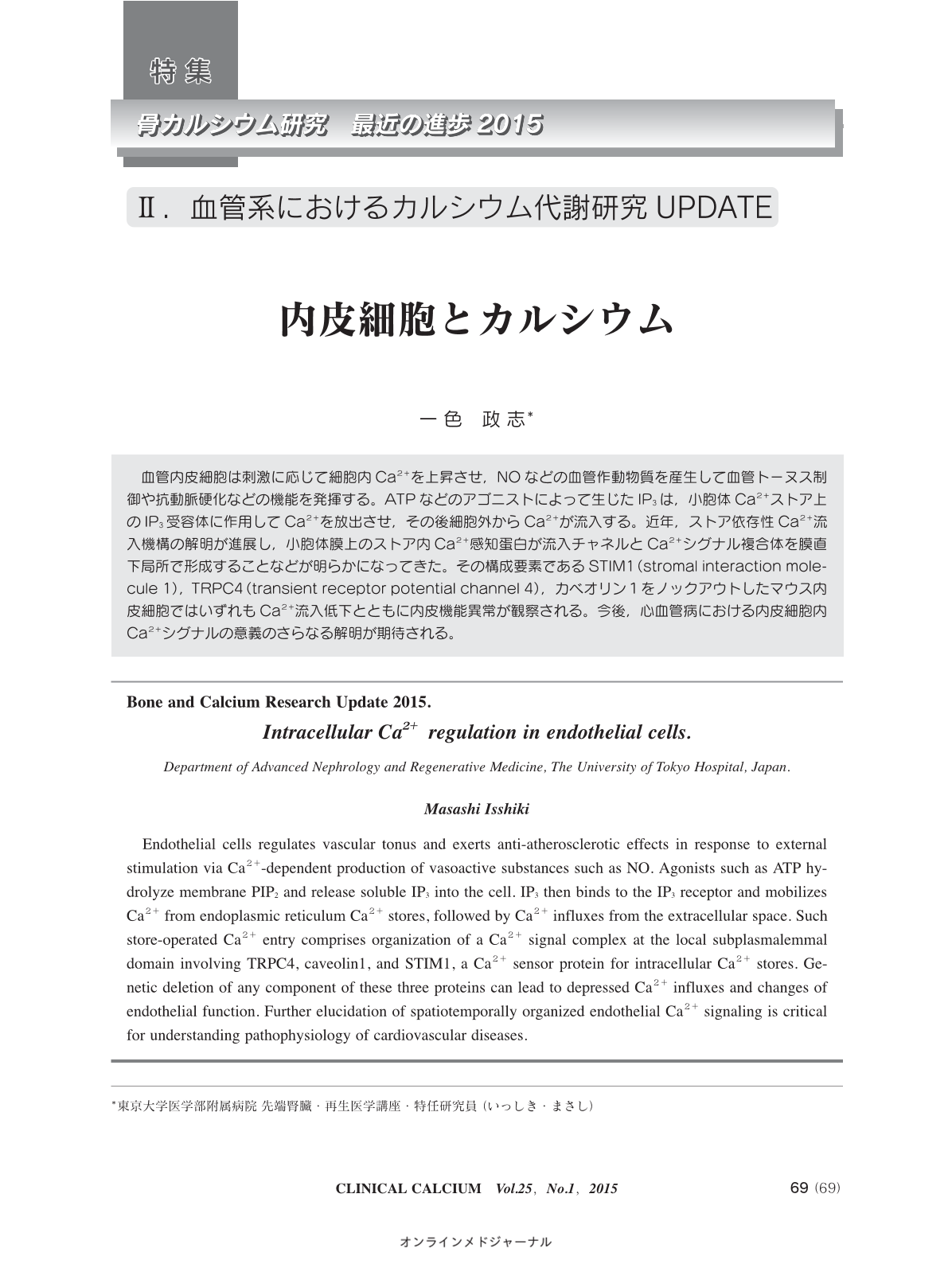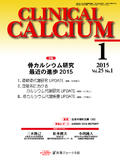Japanese
English
- 有料閲覧
- Abstract 文献概要
- 1ページ目 Look Inside
- 参考文献 Reference
血管内皮細胞は刺激に応じて細胞内Ca2+を上昇させ,NOなどの血管作動物質を産生して血管トーヌス制御や抗動脈硬化などの機能を発揮する。ATPなどのアゴニストによって生じたIP3は,小胞体Ca2+ストア上のIP3受容体に作用してCa2+を放出させ,その後細胞外からCa2+が流入する。近年,ストア依存性Ca2+流入機構の解明が進展し,小胞体膜上のストア内Ca2+感知蛋白が流入チャネルとCa2+シグナル複合体を膜直下局所で形成することなどが明らかになってきた。その構成要素であるSTIM1(stromal interaction molecule 1),TRPC4(transient receptor potential channel 4),カベオリン1をノックアウトしたマウス内皮細胞ではいずれもCa2+流入低下とともに内皮機能異常が観察される。今後,心血管病における内皮細胞内Ca2+シグナルの意義のさらなる解明が期待される。
Endothelial cells regulates vascular tonus and exerts anti-atherosclerotic effects in response to external stimulation via Ca2+-dependent production of vasoactive substances such as NO. Agonists such as ATP hydrolyze membrane PIP2 and release soluble IP3 into the cell. IP3 then binds to the IP3 receptor and mobilizes Ca2+ from endoplasmic reticulum Ca2+ stores, followed by Ca2+ influxes from the extracellular space. Such store-operated Ca2+ entry comprises organization of a Ca2+ signal complex at the local subplasmalemmal domain involving TRPC4, caveolin1, and STIM1, a Ca2+ sensor protein for intracellular Ca2+ stores. Genetic deletion of any component of these three proteins can lead to depressed Ca2+ influxes and changes of endothelial function. Further elucidation of spatiotemporally organized endothelial Ca2+ signaling is critical for understanding pathophysiology of cardiovascular diseases.



